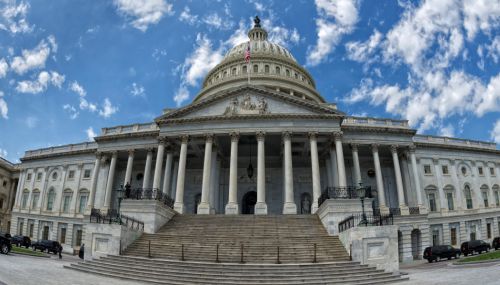All
A Tale of Two Countries
by Samuel Diamond

“…we had everything before us, we had nothing before us…”
Looking for a way to see into the future? Then hop a flight to Australia. If you’re reading this article at any time after noon, it’s already tomorrow there. The continent is always 14 hours ahead of the American Northeast, but the fear for many of our region’s natural gas consumers who picked up the Wall Street Journal on July 11 might have been that it’s also 14 months ahead.
The newspaper retold the story of what happened in Adelaide, South Australia, on a 105º night last February. “As air-conditioning demand soared, regulators called on Pelican Point, a local gas-fueled power station running at half capacity, to crank up,” the story went.
But with Australia having exported 37 million tons of liquid natural gas (LNG) in 2015-2016, the plant simply couldn’t get enough fuel soon enough to run at full capacity. As a result, regulators were forced to cut the electricity of some 90,000 Adelaide homes in order to prevent an even bigger blackout.
It was over 100º outside and over 100,000 people didn’t have air conditioning.
Already the world’s number-two LNG exporter, Australia is expected to overtake Qatar for the top spot by 2020, according to the Australian Petroleum Production & Exploration Association. By that time, the oil and gas sector’s “economic contribution to the national economy will more than double to $65 billion,” says a report cited on the association’s website. But what of the costs to Australia’s own LNG users?
The country exported 62% of the LNG it produced in 2016, according to the BP Statistical Review of World Energy. Meanwhile, spot prices skyrocketed from below $1 per million British thermal units (mBtu) in 2014 to around $7/mBtu in 2017, according to statistics given by the WSJ. Manufacturers laid off workers, residential electricity and gas costs rose, and as mentioned, power wasn’t there for many when they needed it most.
Recognizing in the WSJ article the potential foretellings of an all-too-possible future, the American Energy Coalition (AEC) broke the story to the Oilheat industry, in its July 12 e-Alert, writing: “The U.S. will become the world’s number-three LNG exporter by 2020, according to Energy Department estimates. If Australia is any indicator of what happens when exports increase, that means our country could be looking ahead to higher natural gas prices and tighter domestic supplies, putting the power grid, as well as the home and business owners who depend on it, in jeopardy.”
As it turns out, AEC wasn’t alone in its concerns. The Industrial Energy Consumers of America (IECA), which bills itself as “The Voice of the Industrial Energy Consumers,” had just a few days prior, on July 7, offered a similar warning. Reacting to President Trump’s declaration that the U.S. has massive energy reserves and can afford to export even more of its resources, IECA President Paul N. Cicio issued the following statement: “According to the Energy Information Administration (EIA), the U.S. has 2,196 trillion cubic feet of technically recoverable natural gas in the lower 48 states. Eighty-five percent of those natural gas resources are unproven.
“The EIA’s Annual Energy Outlook (AEO) 2017 natural gas demand forecast to 2050, which is only 33 years away and accounts for only 12 billion cubic feet a day (Bcf/d) of LNG exports, indicates that 56 percent of all natural gas resources will be consumed in that time frame. The 100-year supply is a myth.
“As manufacturing companies who depend on low-cost natural gas, we are alarmed at the volume of LNG exports approved by the U.S. Department of Energy (DOE). The DOE has given final approval of LNG exports to free trade agreement (FTA) and non-free trade agreement (NFTA) countries in the amount of 54 Bcf/d, which is equal to a stunning 71.2 percent of 2016 U.S demand. And EIA is forecasting that Henry Hub natural gas prices will rise 87 percent by 2020. IECA continues to urge the Administration to place a moratorium on further approvals of LNG exports to NFTA countries.”
If the IECA had call for concern on July 7, it had even greater reason to worry on July 11, when the EIA’s Short-Term Energy Outlook projected “LNG gross exports will average 1.9 Bcf/d in 2017, up from 0.5 Bcf/d in 2016.”
Yes, America’s LNG exports are projected to nearly quadruple inside of one year. Picking up on the story, NEFI Regulatory Counsel Mark S. Morgan, Esq., wrote in the July 17 edition of the organization’s weekly e-newsletter, NEON, “If accurate, the huge increase in LNG exports would likely cause prices for residential natural gas and electric utilities to increase.”
With tightening supplies and rising prices on the horizon, the U.S. could very well be on the road to its next energy crisis. Only this time the fuel in its tank would be LNG and the unbuckled driver behind the wheel unrestricted exports.
“America’s and Australia’s seasons are of course reversed,” wrote the AEC. “However, in both countries, natural gas is used not only industrially — by the power plants that provide electricity for air conditioning, lighting and other vital necessities — but also residentially, for home heating. Who can tell whether a -5º day without heat is as dangerous as a 105º day without air conditioning? At any rate, if that’s the kind of question natural gas has us asking, it can’t be the best bridge to a better future … for either side of the planet.”
The WSJ article cited by AEC was released with two titles, “How Energy-Rich Australia Exported Its Way Into an Energy Crisis” (online) and “The Energy Shortage No One Saw Coming” (print). Here in America, at least some are looking ahead, lest history once again repeats itself.
Related Posts
 National Energy Choice Legislation Advances Through Committee
National Energy Choice Legislation Advances Through Committee
Posted on November 20, 2025
 New and Improved: NEFI Member Benefits Deliver More Value
New and Improved: NEFI Member Benefits Deliver More Value
Posted on October 17, 2025
 It’s Upgrade Season. Get the Sale.
It’s Upgrade Season. Get the Sale.
Posted on October 16, 2025
 The Value of Providing Value
The Value of Providing Value
Posted on October 16, 2025
Enter your email to receive important news and article updates.
